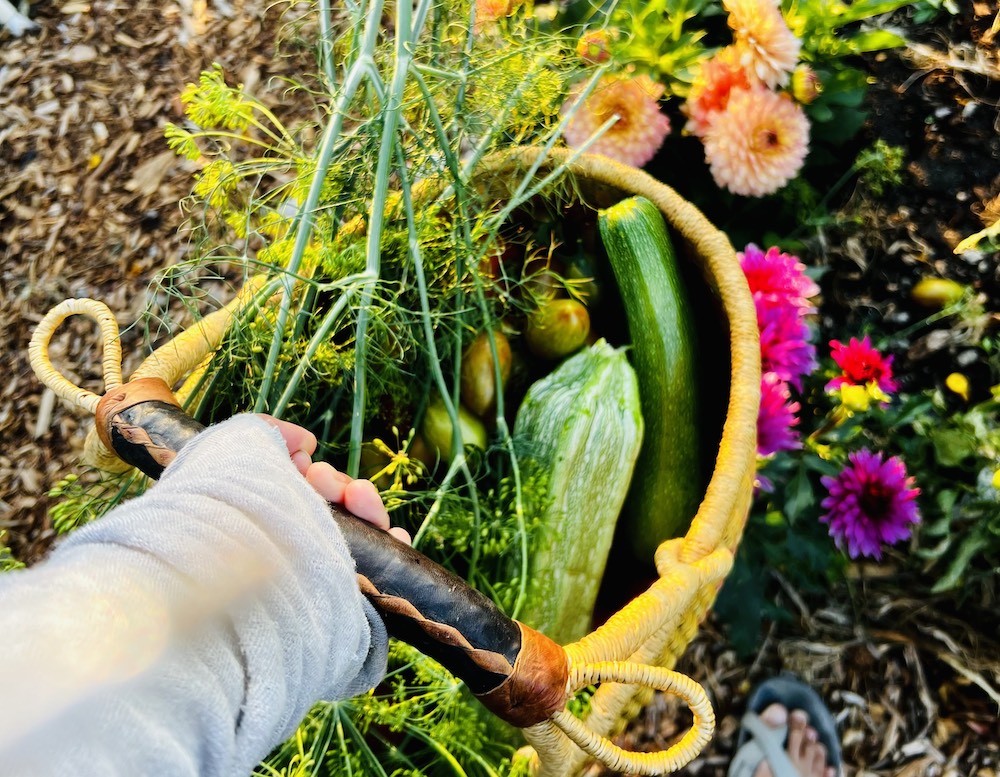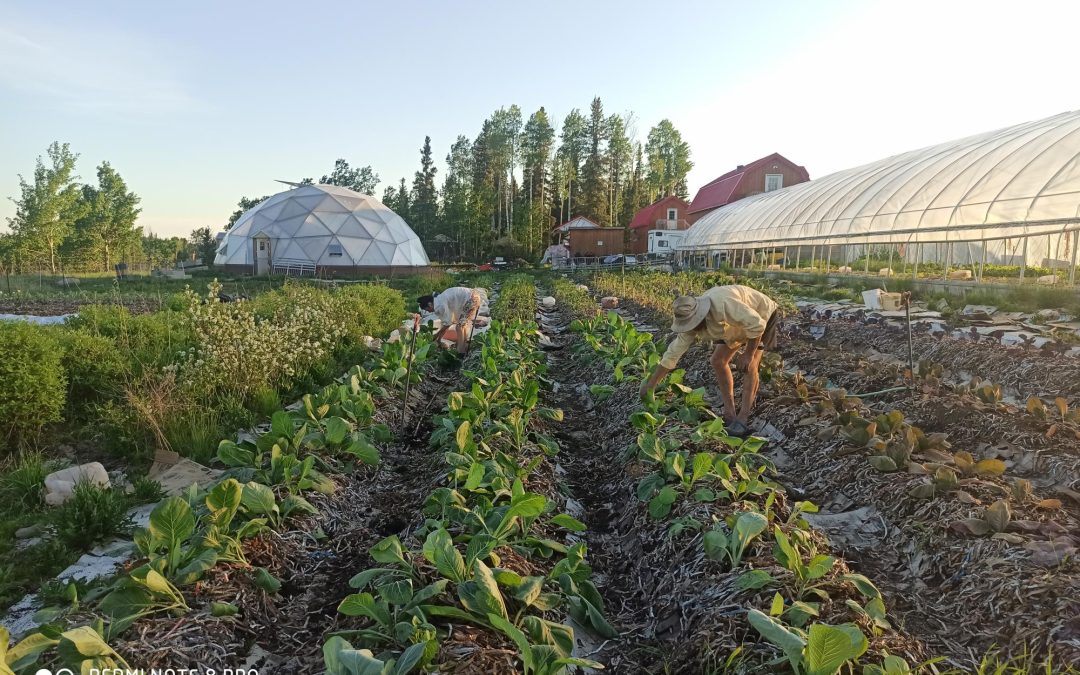
12 Basic Design Principles of Permaculture
(Photo: WWOOFer Yiling Wu, while WWOOFing at Moraine Acres)
“Permaculture is more than a set of guidelines for this or that aspect of farming. It is a way of thinking that dovetails nicely with organic farming practices, including biodynamics. However, it can be adapted for pretty much anything: urban properties, business practices, even relationships.” Linda Harvey
Linda Harvey, Biodynamic Gardener, shares basic design principles and techniques for implementing permaculture systems that care for the Earth and care for the people, while producing healthy harvest.
This article was shared generously by the good folks at Heart & Soil Magazine.
12 Basic Design Principles of Permaculture
1. Observe and Interact
Understand your ecosystem fully before you make changes to it, and carefully observe how these changes affect the system.
2. Catch and Store Energy
Energy is all around us in the form of sun, wind, and water. Harvest gently and use.
3. Obtain a Yield
Act with clear intentions and goals. Yield includes not only tangible commodities but also intangible ones, such as a sense of satisfaction and a quality of life.
4. Apply Self-Regulation and Apply Feedback
Not only from your neighbours and friends but also from the ecosystem.
5. Use and value renewable resources and services.
These are the core of your farm, garden, or other activity.
6. Produce no waste
This principle seems difficult to implement. Some waste is probably inevitable, but a well-planned ecosystem will minimize this. Waste isn’t waste if a use can be found for it – for example, animal manure added to a compost pile is transformed into organic soil nutrients.
7. Design from patterns to details
The larger picture needs to be laid out before attending to details.
8. Integrate rather than segregate
Design your system so that the parts can interact in productive ways. Examples include keyline water management, use of animals in pasture management, and companion planting.
9. Use small and slow solutions
Rather than launch into a huge project, make smaller interventions and note the results.
10. Use and value diversity
Diversity here means not only diversity of species on your land, but also diversity of projects and systems. For example, if there are several different means for generating electricity, then there is a better chance of coping successfully if there is a loss of any one of them.
11. Use edges and value the marginal
An example is the space where two types of habitat merge and support an incredibly diverse collection of organisms that live in either or both habitats. This principle can be applied in designing gardens and orchards.
12. Creatively use and respond to change
Change happens, even forests change. Herb and berry patches come and go. This change is normal. Then there are changes in the larger sense—new subdivisions, new regulations about wetlands, even climate change. It is important to observe, accept feedback and react.
_____
These permaculture design principles are applied to all aspects of land use management, including the construction of buildings, land use planning, water management, soil maintenance, and livestock and crop management. A seasoned permaculture practitioner is expected to have at least some expertise in each of these areas.
Learn more in Issue 13 Nourish to Flourish
To view the mini-mag of this article, follow the link here.
This article was shared generously by the good folks at Heart & Soil Magazine.




